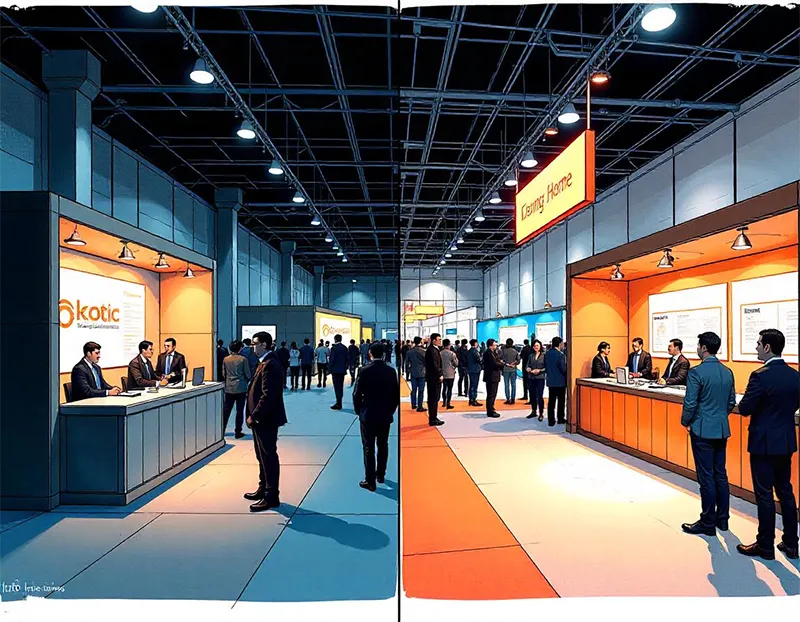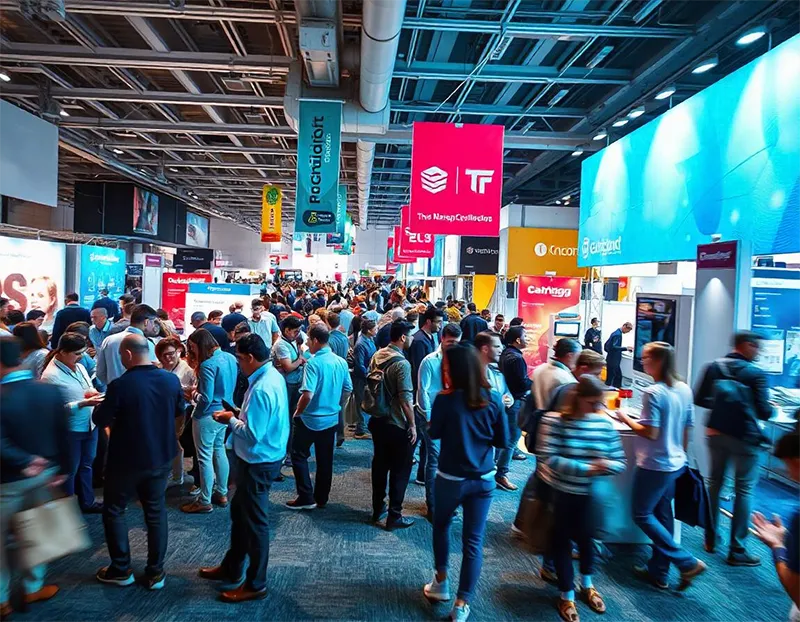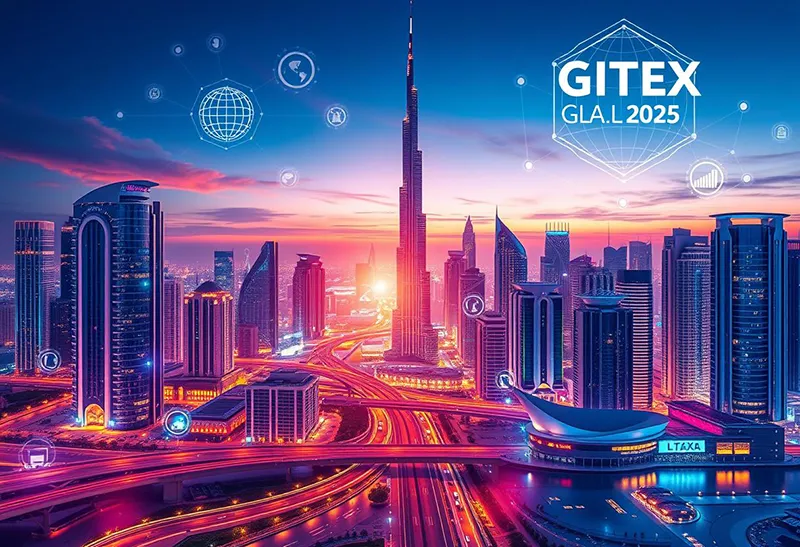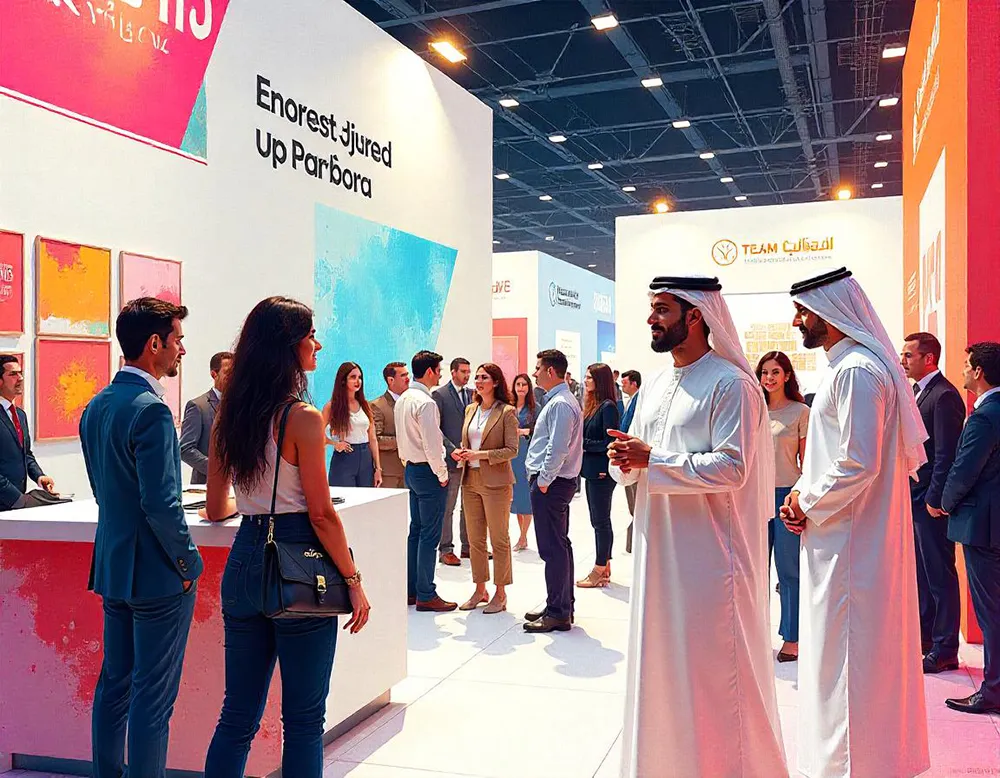Event marketing is a powerful strategy for businesses looking to engage audiences, build brand awareness, and generate leads. However, many companies fall into common pitfalls that reduce the effectiveness of their event marketing efforts. From unclear messaging to poor budget allocation, these mistakes can lead to low engagement and wasted resources.
In this guide, we will explore the biggest event marketing mistakes and provide practical solutions to help businesses optimize their event promotion. We’ll also highlight how Media Print UAE, a leading UAE-based printing and digital marketing company, can support businesses in creating impactful marketing materials for successful events.
The Biggest Event Marketing Pitfalls and How to Avoid Them
Event marketing success depends on precise planning, strategic execution, and optimizing engagement opportunities. However, many businesses unknowingly make critical mistakes that lead to poor attendance, wasted budgets, and missed revenue opportunities. Below, we explore three major event marketing pitfalls and provide actionable solutions to fix them.
1. Unclear Event Messaging
Problem:
Many businesses struggle to communicate a clear and compelling message about their event. If attendees don’t understand what the event is about or why they should attend, they’ll lose interest, leading to low registration rates and weak engagement.
Several factors contribute to unclear messaging:
- Vague event themes that don’t specify the benefit to attendees.
- Inconsistent branding across print, digital, and social media.
- Overcomplicated promotional content that confuses potential attendees rather than attracting them.
According to a 2023 event marketing report by Bizzabo, 95% of marketers believe in-person events help achieve business goals, but poor messaging reduces their impact. If an event’s value isn’t obvious at a glance, potential attendees are likely to ignore it.
Fix:
✅ Define a strong value proposition that highlights why attendees should participate. Keep it simple and focused. Answer the question: “What’s in it for them?”
✅ Use clear, engaging language across all event materials, ensuring potential attendees understand the event’s purpose immediately.
✅ Maintain consistent messaging across all platforms, including:
- Brochures, flyers, and banners.
- Social media ads and email campaigns.
- Website landing pages with precise details about the event.
✅ Design branded event materials that reflect the event’s theme and purpose. A well-designed brochure, poster, or business card reinforces messaging and builds trust.
Key Tip: Keep event slogans short and memorable—use power words that trigger excitement, such as “Exclusive,” “Limited,” “Transformative,” or “Unlock New Opportunities.”
2. Poor Booth Placement
Problem:
A poorly placed trade show or exhibition booth significantly reduces visitor engagement. Many businesses opt for cheaper booths without considering traffic flow, visibility, and accessibility.
Here’s what happens when a booth is placed in the wrong spot:
- Low foot traffic leads to fewer interactions and missed sales opportunities.
- Being too close to competitors makes it harder to stand out.
- Poor visibility areas (corners, near restrooms, or exit doors) cause attendees to walk past without stopping.
A 2023 report from Statista shows that 60% of exhibitors believe booth location significantly impacts event success. Yet, many businesses still underestimate its importance.

Strategic booth placement enhances visibility and engagement
Fix:
✅ Invest in prime booth locations—near entrances, main pathways, or networking areas to ensure maximum visibility and foot traffic.
✅ Use eye-catching booth designs to stand out from competitors. Consider:
- Roll-up banners and backdrop displays to grab attention.
- Interactive elements, such as touchscreens or live demonstrations, to engage visitors.
✅ Position signboards and wayfinding displays to direct foot traffic toward your booth.
✅ Personalize booth branding with logos, colors, and taglines that reflect your business identity.
Pro Tip: Booth placement directly affects networking opportunities—position your booth near industry leaders to increase engagement and credibility.
3. Overspending on Unproductive Marketing Channels
Problem:
Many businesses overspend on marketing without measuring effectiveness. This often happens when:
- They invest in every advertising channel without a clear strategy.
- They fail to analyze past event performance to determine what worked.
- They ignore digital marketing trends, relying on outdated tactics.
A 2023 survey by HubSpot found that 42% of marketers struggle with tracking event marketing ROI. Spending without measurement leads to wasted budgets and poor results.
Fix:
✅ Analyze past event data to identify which marketing channels delivered the highest engagement and ROI.
✅ Prioritize high-ROI channels such as:
- SEO optimization for event websites.
- PPC campaigns targeting potential attendees.
- Social media ads with laser-focused audience targeting.
✅ Use content marketing to maximize organic reach:
- Post event teasers, behind-the-scenes videos, and interactive polls.
- Publish guest speaker interviews and testimonials to build credibility.
✅ Track and optimize campaigns using analytics tools such as Google Analytics, Facebook Ads Manager, and CRM systems.
Best Practice: Instead of spreading your budget too thin, focus on a few key channels that generate the best engagement.
Avoiding these common event marketing pitfalls can significantly improve your event’s success. By clarifying messaging, securing high-traffic booth locations, and optimizing marketing spend, businesses can increase engagement and ROI.
For high-quality event branding and marketing solutions, Media Print UAE offers brochure design, exhibition booth setups, banner printing, social media marketing, and PPC campaign management. Elevate your next event with expert-driven marketing solutions that ensure maximum impact.
Common Design, Staffing, and Engagement Mistakes
A successful event isn’t just about attendance—it’s about creating a memorable and engaging experience. Many businesses struggle with poor branding, untrained staff, and low audience interaction, which can damage their reputation and reduce ROI. Let’s explore the most common design, staffing, and engagement mistakes and how to fix them.
4. Poor Event Branding and Graphics
Problem:
Your event’s branding and visual identity are the first things attendees notice. Badly designed promotional materials can create a negative first impression, making your event seem unprofessional, unorganized, or outdated.
Common branding mistakes include:
- Low-quality brochures, business cards, and banners that don’t reflect your brand’s professionalism.
- Inconsistent branding across print, social media, and event booths.
- Cluttered designs that overwhelm attendees rather than attract them.
According to a 2023 Event Marketing Report by Bizzabo, 74% of event attendees say that branding significantly impacts their event experience. Poor branding can make it harder to build credibility and trust with potential customers.
Fix:
✅ Invest in high-quality branding materials that reflect your brand’s identity. A well-designed business card or brochure leaves a lasting impression.
✅ Use visually appealing brochures, catalogs, and posters to create a polished and professional look. High-resolution images and cohesive color schemes can enhance brand recognition.
✅ Ensure all event marketing materials align with your branding—from social media graphics to event signage and large-format prints.
✅ Create an immersive brand experience by incorporating backdrop designs, custom banners, and branded booth setups.
Pro Tip: Keep event visuals consistent across all platforms—from print materials to digital marketing—to create a seamless brand experience.
5. Insufficient or Untrained Staff
Problem:
Understaffing or employing untrained personnel can result in a disorganized and ineffective event experience. Your team represents your brand, and if they lack proper training, it can lead to:
- Missed engagement opportunities because staff don’t know how to interact with attendees.
- Confusion and inefficiency, making it hard for visitors to get the right information.
- Unprofessional representation, leading to a negative perception of your brand.
A report by MeetingsNet (2023) found that 86% of event attendees say staff professionalism influences their overall event experience. Untrained employees can cost you valuable leads and reduce event success.
Fix:
✅ Train your team on customer engagement strategies, including:
- How to initiate conversations with attendees.
- How to handle inquiries efficiently.
- How to collect leads and promote your brand.
✅ Ensure every team member understands their role in maximizing lead generation. Assign specific responsibilities such as:
- Registration and greeting guests.
- Product demos and Q&A.
- Social media and online engagement.
✅ Provide branded uniforms and promotional materials to create a professional and polished look. A well-dressed, knowledgeable team enhances brand credibility and boosts trust among attendees.
✅ Use event briefing sessions to ensure staff members understand:
- Event goals.
- Target audience.
- Marketing messages and sales objectives.
Key Tip: Make your staff approachable and engaging—a friendly, well-trained team can make or break your event’s success.
6. Low Audience Engagement
Problem:
Failing to engage attendees results in a boring and forgettable event experience. Attendees expect interactive and immersive experiences, and if they don’t find them, they may leave early or lose interest.
Common engagement mistakes include:
- No interactive activities or audience participation.
- Lack of social media integration.
- Minimal opportunities for attendees to connect with the brand.
According to a 2023 study by EventMB, 80% of event planners say audience engagement is the biggest challenge in event marketing. Without a well-thought-out engagement strategy, attendees will not stay interested or remember your brand.

Interactive elements boost audience participation and interest
Fix:
✅ Use interactive elements such as:
- Live Q&A sessions with industry experts.
- Gamification techniques (e.g., contests, leaderboards, digital scavenger hunts).
- Polls and quizzes to encourage audience participation.
✅ Offer branded giveaways and event gift items to keep attendees interested. Attendees appreciate free, high-quality branded merchandise, and it keeps your brand in their minds even after the event.
✅ Incorporate social media marketing to amplify engagement. Strategies include:
- Live streaming event highlights on Facebook, Instagram, or LinkedIn.
- Creating event-specific hashtags and encouraging attendees to post.
- Hosting social media contests (e.g., best event photo contest).
✅ Create networking opportunities by hosting VIP meetups, discussion panels, or breakout sessions to keep attendees engaged.
Best Practice: Keep attendees actively involved—the more they engage with your event, the more likely they are to remember your brand and take action.
Strong branding, a well-trained team, and engaging attendees are key factors in event success. By addressing design flaws, staffing issues, and audience engagement challenges, businesses can maximize their event marketing impact.
For companies looking for event branding solutions, Media Print UAE offers custom logo design, high-quality printed marketing materials, business cards, branded giveaways, and social media marketing services.
Make your next event a success with high-impact branding and engagement strategies.
Actionable Fixes for Event Marketing Mistakes
Addressing event marketing mistakes requires proactive planning, strategic execution, and continuous optimization. Below are key areas where businesses can make impactful improvements to maximize attendance, engagement, and ROI.
7. Developing a Strong Pre-Event Marketing Strategy
Problem:
Many businesses fail to promote their event well in advance, leading to low turnout, poor engagement, and wasted marketing budgets. An effective pre-event marketing strategy ensures that the right audience is reached at the right time.
Common pre-event marketing mistakes include:
- Ignoring SEO, making it difficult for potential attendees to find the event online.
- Relying solely on one marketing channel instead of using a mix of digital and print strategies.
- Failing to create urgency in event promotions, resulting in last-minute registrations or dropouts.
Fix:
✅ Optimize your event SEO and run paid ad campaigns to boost visibility.
- Use event-specific keywords to rank higher in search engines.
- Run Google Ads and PPC campaigns to target specific demographics and maximize sign-ups.
- Utilize social media ads to generate interest and increase pre-event engagement.
✅ Use email marketing to drive registrations and build anticipation.
- Send personalized invitations to potential attendees.
- Automate reminders and follow-ups to keep your event top of mind.
- Offer early-bird discounts or exclusive content to encourage early sign-ups.
✅ Combine print and digital marketing for maximum impact.
- Distribute brochures, flyers, and posters to reinforce online promotions.
- Use custom event banners and signage to attract attention in physical locations.
Pro Tip: Start promoting your event at least 6-8 weeks in advance to maximize reach and conversions.
8. Enhancing On-Site Experience
Problem:
Many businesses focus on attracting attendees but fail to create an engaging on-site experience. A poorly organized event can lead to frustration, confusion, and disengagement.
Common on-site experience issues:
- Lack of clear signage, making it hard for attendees to navigate the venue.
- Dull or uninviting booth designs, causing low engagement.
- No branded materials, missing an opportunity to strengthen brand recognition.
Fix:
✅ Use signage and wayfinding displays to guide attendees effortlessly.
- Place directional signs and maps at key locations.
- Ensure that signs are bold, readable, and branded for consistency.
✅ Design branded booths and exhibition stands that capture attention.
- Use interactive displays, roll-up banners, and backdrop installations to create an immersive experience.
- Ensure that branding is consistent with pre-event promotions for recognition.
✅ Offer attendees custom packaging with branded materials.
- Provide branded welcome kits, tote bags, and packaging to make attendees feel valued.
- Include company brochures, business cards, and promotional items to reinforce your brand.
Key Takeaway: A well-designed event space with clear signage, interactive booths, and branded materials enhances the overall attendee experience and increases engagement.
9. Post-Event Follow-Up & Analysis
Problem:
Many businesses neglect post-event engagement, missing a critical opportunity to convert attendees into loyal customers. Without proper follow-up, valuable leads can go cold.
Common post-event mistakes:
- Not collecting attendee feedback, leading to missed improvement opportunities.
- Failing to follow up on leads, reducing conversion rates.
- Ignoring event data, making it hard to measure success and optimize future efforts.
Fix:
✅ Collect feedback via surveys and follow-up emails to understand attendee satisfaction.
- Use Google Forms or survey tools to gather responses.
- Ask for feedback on content, speakers, engagement, and overall experience.
✅ Measure leads and conversions from the event to determine ROI.
- Track how many leads were collected and how many converted into customers.
- Identify which marketing channels contributed the most to sign-ups.
✅ Use event performance data to improve future marketing efforts.
- Analyze social media interactions, email open rates, and on-site engagement metrics.
- Implement A/B testing in future campaigns to refine messaging and targeting.
Pro Tip: Follow up within 48 hours after the event while attendees’ experience is still fresh.
Measuring and Optimizing Event Marketing Performance
Tracking and optimizing event performance ensures that marketing efforts deliver the best possible results. Below are the key metrics and tools needed for ongoing improvement.
10. Key Metrics to Track Success
✅ Attendance vs. Registrations:
- Track how many registered attendees actually showed up.
- Identify patterns to improve pre-event marketing and conversion strategies.
✅ Engagement Levels:
- Measure booth visits, social media interactions, and live session participation.
- Track QR code scans, app downloads, and digital interactions.
✅ Lead Generation:
- Evaluate how many high-quality leads were captured.
- Assess lead conversion rates post-event.
✅ Return on Investment (ROI):
- Compare total revenue generated to event marketing costs.
- Determine which strategies produced the highest ROI and adjust accordingly.
Fact: A study by Forrester Research (2023) found that businesses that track event data see 20% higher conversion rates than those that don’t.
11. Tools and Techniques for Optimization
✅ Use Google Analytics and CRM tools to monitor event success.
- Track website traffic, form submissions, and user behavior.
- Use CRM tools like HubSpot, Salesforce, or Zoho to manage leads efficiently.
✅ Implement retargeting campaigns to engage attendees post-event.
- Use Facebook and Google retargeting ads to re-engage attendees.
- Offer exclusive post-event promotions to boost conversions.
✅ Continuously refine marketing strategies based on data insights.
- Identify which marketing efforts were most effective and scale them.
- Remove underperforming strategies and replace them with higher-converting tactics.
Pro Tip: Use heatmaps and attendee tracking tools to see which areas of your booth or event space received the most traffic.
Conclusion
Successful event marketing requires strategic planning, compelling branding, audience engagement, and post-event analysis. By avoiding common event marketing mistakes, businesses can:
✔️ Improve event attendance and engagement.
✔️ Maximize ROI with data-driven marketing strategies.
✔️ Build long-term relationships with attendees.
Media Print UAE offers a complete suite of print and digital marketing solutions to help businesses create impactful event materials. From brochure printing and exhibition booth setups to SEO and social media marketing, their services ensure a seamless, results-driven event marketing experience.
By implementing best practices and leveraging expert support, businesses can make their events more effective, memorable, and profitable.
Frequently Asked Questions (FAQs)
1. What are the most common event marketing mistakes?
The most common event marketing mistakes include unclear messaging, poor booth placement, overspending on ineffective marketing channels, low audience engagement, untrained event staff, and weak post-event follow-ups. These mistakes lead to low attendance, wasted budgets, and missed sales opportunities. A well-planned event marketing strategy can help businesses avoid these pitfalls and maximize ROI.
2. How can I improve event messaging to attract more attendees?
To improve event messaging, create a clear value proposition that explains why attendees should join. Use consistent branding across all marketing materials, including brochures, flyers, banners, and social media ads. Make sure your event promotions answer key questions such as “What’s in it for me?” and use engaging language that generates excitement.
3. How do I choose the best location for my event booth?
Choosing the right booth placement is crucial for event success. Opt for high-traffic areas such as entrances, networking zones, or near popular attractions. Use eye-catching booth designs, backdrop banners, and signage to stand out. Avoid placing your booth in corners, near exits, or areas with low visibility to ensure maximum foot traffic.
4. How can I track the success of my event marketing campaign?
Track your event marketing performance using key metrics like attendance vs. registrations, audience engagement levels, lead generation rates, and return on investment (ROI). Use Google Analytics, CRM software, and social media insights to measure results. Post-event surveys also help gather feedback and identify areas for improvement.
5. What are the best ways to increase audience engagement at events?
Boost event engagement by incorporating interactive elements such as live Q&A sessions, contests, polls, gamification, and social media integration. Offer branded giveaways to create a lasting impression. Encourage attendees to participate through live streaming, hashtags, and social media promotions.
6. How important is post-event follow-up in event marketing?
Post-event follow-up is critical for converting leads into customers. Send thank-you emails, surveys, and exclusive post-event offers to keep attendees engaged. Use Google Ads retargeting and social media campaigns to maintain audience interest and drive conversions.


![Top 10 Must-Attend Business Events in Dubai [Updated 2025] 3 Top 10 Must-Attend Business Events in Dubai](https://mediaprintuae.com/wp-content/uploads/2024/11/Top-10-Must-Attend-Business-Events-in-Dubai.webp)



There are 2 comments
Thank you for reading this article on event marketing mistakes and fixes. If you have any feedback, suggestions, or questions, feel free to comment below. Did we miss anything? Let us know how we can improve! Also, share any new ideas that might be helpful for future articles.
[…] Pro Tip: Planning an event? Encourage attendees to share UGC using custom event hashtags, branded materials, and exclusive […]